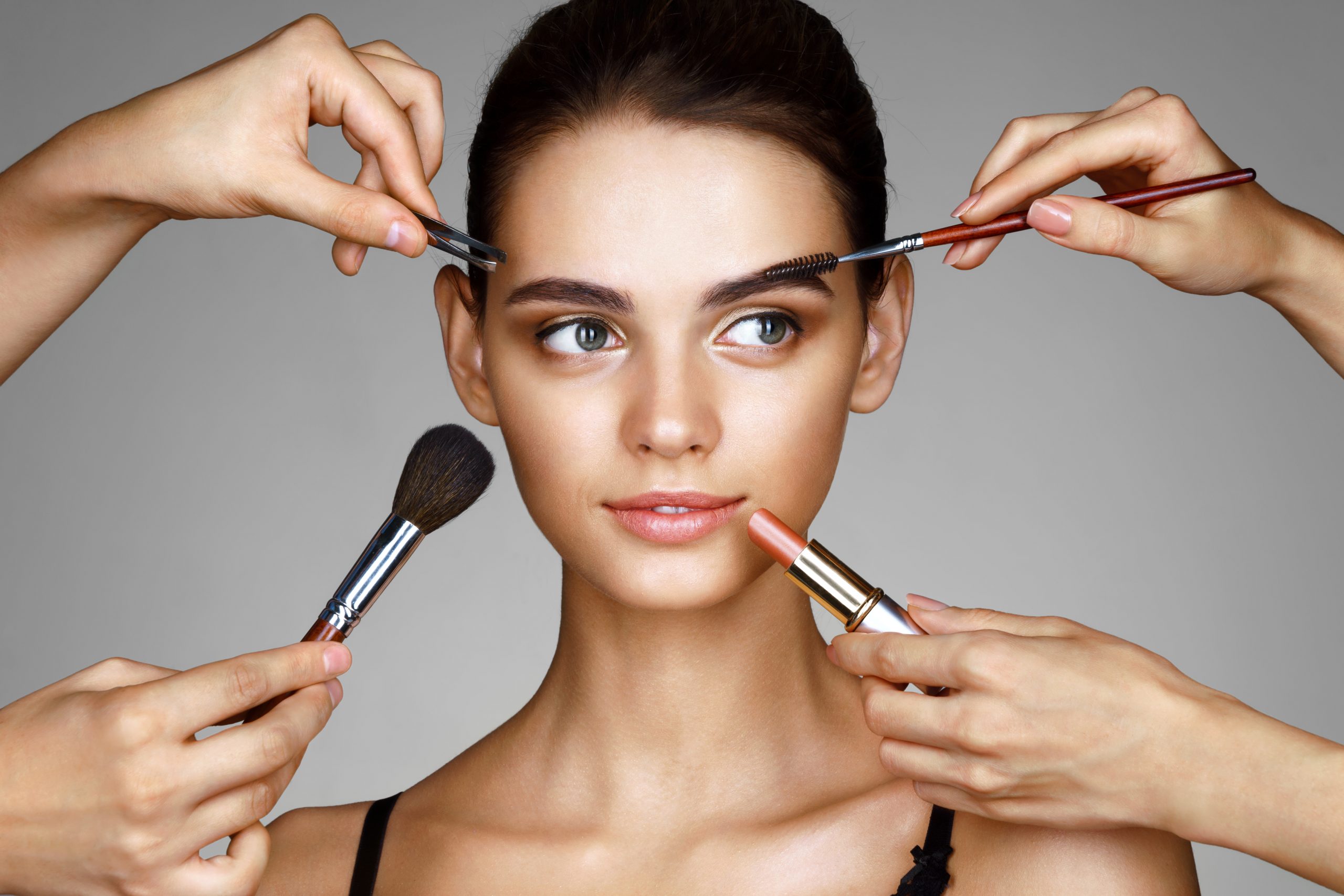TASK 2 (DISCUSS BOTH VIEWS): BEAUTY
In recent years, the cosmetics and beauty industry has expanded rapidly, often promoting the idea that physical appearance is central to success and self-worth.
Some people argue that this emphasis on external beauty damages individuals’ self-esteem and perpetuates unrealistic ideals, while others believe that cosmetics empower people to express their identity and boost confidence.
Discuss both views and give your own opinion.
Sample Answer
In recent decades, the expansion of the cosmetics and beauty industry has contributed to the promotion of an eccentric idea underscoring physical outlook as being the key to success and self-esteem, while detractors of this growing sentiment argue otherwise, fervently criticizing this disproportionate belief. They, instead, believe that cosmetics serve as an identity empowerment and confidence booster. I will shed light on both viewpoints and express my opinion on this controversial debate.
Those arguing in favour of the material and psychological primacy of the beauty industry cite legitimate real-world examples. Many wounded and disfigured soldiers, for example, have resorted to cosmetic surgery to correct their disfigurements and restructure personal deformations with the hope of securing better personal and professional opportunities. In fact, such efforts have come to fruition in many cases, as companies and communities are likely to welcome people with appealing or at least acceptable outlooks. Similarly, the Korean pop industry has recorded alarmingly high rates of plastic surgery and outlook enhancement, leading to the debuts of numerous solo artists and bands with attractive physical appearances.
However, these instances are rare and only applicable to specialized segments of the population, such as wounded soldiers and K-pop artists in the aforementioned examples. The average person is likely to suffer both physically and psychologically from exaggerated ideals rather than benefit from them. An instructive example would be fitness models who tend to be vulnerable to body dysmorphia since no matter how diligently they train, there will always be other competitors who are bigger, more ripped, and more defined in terms of muscle aesthetics. Not only do these physique influencers suffer from physical issues stemming from overtraining and substance abuse, but their mental health also takes a heavy toll from consistent comparison and distress.
In conclusion, while there are valid arguments in favour of wealth and self-worth gained from promoting extreme beauty ideals, I believe the success rate is relatively low and is limited to a very small segment of the population. However, the promotion of unrealistic ideals is detrimental physically and mentally, leading to far-reaching consequences that are irreversible.
Marking by Chat GPT
TỪ VỰNG HAY
In recent years, the cosmetics and beauty industry has expanded rapidly, often promoting the idea that physical appearance is central to success and self-worth.
Some people argue that this emphasis on external beauty damages individuals’ self-esteem and perpetuates unrealistic ideals, while others believe that cosmetics empower people to express their identity and boost confidence.
Discuss both views and give your own opinion.
In recent decades, the expansion of the cosmetics and beauty industry has contributed to the promotion of an eccentric idea underscoring physical outlook as being the key to success and self-esteem, while detractors of this growing sentiment argue otherwise, fervently criticizing this disproportionate belief. They, instead, believe that cosmetics serve as an identity empowerment and confidence booster. I will shed light on both viewpoints and express my opinion on this controversial debate.
Those arguing in favour of the material and psychological primacy of the beauty industry cite legitimate real-world examples. Many wounded and disfigured soldiers, for example, have resorted to cosmetic surgery to correct their disfigurements and restructure personal deformations with the hope of securing better personal and professional opportunities. In fact, such efforts have come to fruition in many cases, as companies and communities are likely to welcome people with appealing or at least acceptable outlooks. Similarly, the Korean pop industry has recorded alarmingly high rates of plastic surgery and outlook enhancement, leading to the debuts of numerous solo artists and bands with attractive physical appearances.
However, these instances are rare and only applicable to specialized segments of the population, such as wounded soldiers and K-pop artists in the aforementioned examples. The average person is likely to suffer both physically and psychologically from exaggerated ideals rather than benefit from them. An instructive example would be fitness models who tend to be vulnerable to body dysmorphia since no matter how diligently they train, there will always be other competitors who are bigger, more ripped, and more defined in terms of muscle aesthetics. Not only do these physique influencers suffer from physical issues stemming from overtraining and substance abuse, but their mental health also takes a heavy toll from consistent comparison and distress.
In conclusion, while there are valid arguments in favour of wealth and self-worth gained from promoting extreme beauty ideals, I believe the success rate is relatively low and is limited to a very small segment of the population. However, the promotion of unrealistic ideals is detrimental physically and mentally, leading to far-reaching consequences that are irreversible.
Vocabulary
- expansion of the cosmetics and beauty industry – sự mở rộng của ngành mỹ phẩm và làm đẹp
- promotion of an eccentric idea – việc quảng bá một ý tưởng lập dị
- physical outlook – ngoại hình bên ngoài
- detractors of this growing sentiment – những người phản đối xu hướng này
- disproportionate belief – niềm tin lệch lạc / không cân đối
- serve as an identity empowerment and confidence booster – giúp củng cố bản sắc và tăng tự tin
- shed light on both viewpoints – làm sáng tỏ cả hai quan điểm
- controversial debate – cuộc tranh luận gây tranh cãi
- in favour of – ủng hộ
- material and psychological primacy – tầm quan trọng vật chất và tâm lý
- legitimate real-world examples – ví dụ thực tế hợp lý
- resorted to cosmetic surgery – nhờ đến phẫu thuật thẩm mỹ
- restructure personal deformations – tái cấu trúc các biến dạng cơ thể
- securing better personal and professional opportunities – đạt được cơ hội cá nhân và nghề nghiệp tốt hơn
- come to fruition – mang lại kết quả
- appealing or at least acceptable outlooks – vẻ ngoài hấp dẫn hoặc ít nhất là chấp nhận được
- alarmingly high rates of plastic surgery – tỷ lệ phẫu thuật thẩm mỹ cao đáng báo động
- attractive physical appearances – ngoại hình thu hút
- specialized segments of the population – nhóm dân số chuyên biệt
- exaggerated ideals – lý tưởng bị phóng đại
- instructive example – ví dụ mang tính minh họa
- vulnerable to body dysmorphia – dễ mắc chứng rối loạn hình thể
- muscle aesthetics – vẻ đẹp hình thể cơ bắp
- takes a heavy toll – gây tổn hại nặng nề
- far-reaching consequences – hậu quả sâu rộng
✔ DÀN Ý
🔹 Introduction – Mở bài
👉 Paraphrase đề: The expansion of the beauty industry → promote the idea that looks = success & self-worth
→ Giải thích 2 chiều (both views):
- View 1: Beauty boosts confidence & opportunities.
- View 2: Unrealistic ideals harm mental health.
→ Thesis (quan điểm cá nhân): I’ll discuss both and give my opinion.
📘 Cấu trúc ghi nhớ:
Paraphrase + Both views + Thesis (own stance)
→ (Giới thiệu 2 phe + khẳng định mình sẽ nêu quan điểm cuối bài)
🔹 Body 1 – Ủng hộ (View 1: Positives)
➡️ Main idea: Beauty can empower and open doors.
- Example 1: Wounded soldiers use cosmetic surgery → regain appearance → get jobs & respect.
- Example 2: K-pop industry → high rate of plastic surgery → debut success & fame.
📘 Cấu trúc ghi nhớ:
Topic sentence (Positive side) → Specific examples (real-life) → Result (benefit)
→ (Giải thích + minh họa cụ thể + kết quả tích cực)
🔹 Body 2 – Phản đối (View 2: Negatives)
➡️ Main idea: Unrealistic ideals cause harm.
- Average people suffer → stress, body dysmorphia.
- Fitness models → comparison → mental & physical toll.
📘 Cấu trúc ghi nhớ:
Topic sentence (Negative side) → Illustration (fitness models) → Consequences (mental + physical damage)
→ (Nêu vấn đề + ví dụ cụ thể + hậu quả)
🔹 Conclusion – Kết bài
➡️ Restate position: Although some gain from extreme beauty ideals → chỉ số ít được lợi.
➡️ Overall: Unrealistic ideals are detrimental physically & mentally → long-term irreversible harm.
📘 Cấu trúc ghi nhớ:
Summarise both sides + Reaffirm stance (side with harm)
→ (Tóm lại 2 bên + nhấn mạnh phe mình chọn)
🔑 Summary Pattern (Khuôn viết nhanh nhớ lâu)
Intro: Paraphrase + Both sides + Thesis
BP1: Benefit side → examples → results
BP2: Harm side → examples → effects
Conclusion: Summarise + Final opinion


